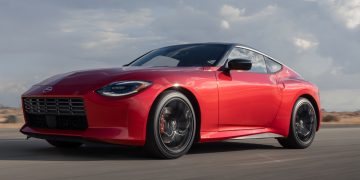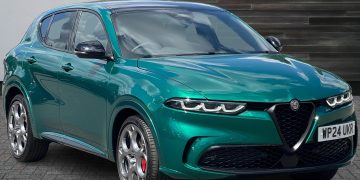Introduction: Aston Martin’s Timeless Appeal in Automotive Culture
For over a century, Aston Martin has been more than just a car manufacturer; it has been an icon of British craftsmanship, luxury, and performance. Known for its elegant design, uncompromising quality, and outstanding performance, Aston Martin has carved out a niche at the pinnacle of the luxury automotive market. The brand’s influence goes beyond cars, touching on pop culture, motorsport, and even shaping how society views automotive craftsmanship.
This article seeks to explore the profound automotive culture and influence of Aston Martin, examining how the brand has impacted the world of motorsport, the luxury market, design aesthetics, and its role in popular media—particularly through its iconic association with the James Bond franchise.
1. Aston Martin’s Birth: A Legacy Steeped in British Heritage
The Origins of Aston Martin: 1913-1940
Aston Martin was founded in 1913 by Lionel Martin and Robert Bamford, with the intention of creating high-performance cars designed for motorsport. Their first creation, the Aston Martin 1914, marked the beginning of a brand that would ultimately become a symbol of British automotive excellence.
- British Identity: Aston Martin’s deep ties to British engineering, design, and motorsport heritage gave it a distinctive identity from the very beginning. It was a company born out of a love for motorsport, with Martin’s success in events like the Aston Clinton Hillclimb influencing the development of the first Aston Martin cars.
- Racing Legacy: From the outset, Aston Martin was involved in motorsport, competing in events such as the Le Mans 24 Hours and Grand Prix. Even through the turmoil of World War I, the company continued to focus on engineering cars that would compete at the highest levels.
2. The DB Era: Defining the Brand’s Performance and Elegance (1947 – 1970s)
David Brown and the DB Legacy
In 1947, the company was acquired by David Brown, a key figure who would go on to define Aston Martin’s culture. Brown’s leadership not only revitalized Aston Martin but also cemented the legacy of the DB series, starting with the DB1 and moving through to the iconic DB5, DB6, and DBS models. The DB series is synonymous with both elegance and performance, setting the stage for the Aston Martin that would appear in James Bond films.
- The DB5 and James Bond: The DB5 remains one of the most famous Aston Martins ever created, partly because of its prominent role as James Bond’s car in the 1964 film Goldfinger. The association with 007 gave Aston Martin not only a seat at the table of automotive excellence but also elevated it to a cultural icon. It became the epitome of the cool, sophisticated, and powerful British gentleman, traits that are now intrinsically linked with the brand.
- Performance Philosophy: David Brown’s vision was always to merge performance with luxury. Aston Martin cars during this period featured powerful inline-six and V8 engines, distinctive design lines, and hand-built craftsmanship—qualities that would become the hallmarks of the brand.
3. The 1980s and 1990s: The Struggles and Revival
Financial Instability and the Rise of the V8 Vantage
The 1980s and 1990s were difficult years for Aston Martin, marked by a series of ownership changes and financial struggles. Despite these challenges, the brand continued to focus on producing high-performance vehicles with luxury appeal, and the V8 Vantage (introduced in 1977) became one of the most beloved models of the era.
- Motorsport Influence: During this period, Aston Martin reasserted its presence in motorsports, including Formula 1, where it achieved some success in the racing world with engineering-driven solutions.
- Performance and Design: With models like the V8 Vantage and the DBS, Aston Martin remained committed to crafting cars that were fast, stylish, and distinctive. The company’s motorsport heritage was never far from the design philosophy, and many of these cars were influenced by lessons learned on the race track.
4. Aston Martin in the 21st Century: Innovation, Design, and the Future
The Modern Lineup: DB11, Vantage, and DBX
In the 21st century, Aston Martin has embraced a more globalized, design-driven approach, producing a range of models that blend modern technology with the brand’s traditional focus on luxury, style, and performance.
- DB11: The DB11, launched in 2016, marked the next chapter in Aston Martin’s history. It is a grand tourer that combines elegant design with cutting-edge technology and high-performance engines. The DB11 is available with a V8 or V12 engine and offers one of the most refined driving experiences in its class.
- Vantage: The Vantage continues to be Aston Martin’s dedicated sports car model, offering performance-oriented enthusiasts a more aggressive driving experience. Powered by a twin-turbo V8, it offers exceptional agility and precision handling.
- DBX: Aston Martin’s first SUV, the DBX, made its debut in 2020. Combining the luxury and performance of Aston Martin with the practicality of an SUV, the DBX has been a game-changer, appealing to a broader demographic of high-net-worth individuals.
- Electric and Hybrid Future: With cars like the Valhalla, Aston Martin has embraced a future that incorporates hybrid technology, setting the stage for a more sustainable and innovative brand moving forward. The Valhalla combines high-performance with electrification, pushing Aston Martin into the next generation of performance cars.

5. Aston Martin and Pop Culture: The Bond Legacy
James Bond: The Definitive Aston Martin Connection
Perhaps no other connection has had a greater impact on the brand’s cultural influence than James Bond. Since the DB5 made its debut in Goldfinger, Aston Martin has been forever linked to the 007 franchise. The connection between the two brands has influenced the perception of Aston Martin as the car of choice for class, style, and dangerous sophistication.
- The Bond Effect: The image of a DB5 or V8 Vantage speeding through an exotic location, equipped with gadgets and accompanied by the suave Agent 007, has been firmly etched in the minds of audiences worldwide. This powerful association has led to Aston Martin becoming a symbol of prestige and power.
- Brand Image: The allure of Aston Martin’s cars has been significantly enhanced by the Bond connection, and many fans and owners of Aston Martins see themselves as living the dream of James Bond—an aspirational symbol of style and action.
6. Aston Martin’s Cultural Impact: Design, Innovation, and Motorsports
Motorsports and Technology
Aston Martin’s presence in motorsports has long been a vital part of its cultural and engineering identity. The brand’s involvement in racing—from the early days of Le Mans to more modern endeavors like the Formula 1 team—has cemented its role as a technical innovator.
- Le Mans and Racing Legacy: Aston Martin has participated in Le Mans 24 Hours and continues to push the boundaries of performance through its motorsport programs, such as the Aston Martin Racing team. The knowledge gained in motorsport has helped Aston Martin refine its road cars, blending race-bred performance with luxury craftsmanship.
- Formula 1: Aston Martin has returned to the Formula 1 grid, as the Aston Martin Cognizant Formula One Team, marking the latest chapter in its motorsport history. The experience gained in F1 is now influencing the engineering and design of its high-performance road cars.
Design and Craftsmanship: The Core of Aston Martin’s Identity
At the heart of Aston Martin’s automotive culture lies a commitment to luxury craftsmanship. The brand has always prioritized hand-built quality, with master craftsmen carefully constructing each car. The signature aluminum bodywork, luxurious interiors, and distinctive design have made Aston Martin cars stand out in a crowded automotive landscape.
- Customization: Aston Martin has made customization a cornerstone of its brand identity. Owners of Aston Martin vehicles can choose from a wide array of customizable features, including bespoke leathers, trim options, and even unique paint finishes. This level of personalization has contributed to the sense of exclusivity and luxury associated with the brand.
7. Aston Martin in the Digital Age: Staying Relevant in a Changing Market
A Modern Vision for a Classic Brand
In today’s fast-paced, tech-driven world, Aston Martin continues to face new challenges. The brand must adapt to shifting market trends while staying true to its heritage. With the rise of electric cars and advanced technologies, Aston Martin is working to ensure its future remains as innovative and influential as its past.
- Electric Vehicles and Sustainability: As part of the push towards sustainability, Aston Martin is developing electric and hybrid vehicles, such as the Aston Martin Lagonda. These cars aim to blend zero-emissions technology with the luxury and performance Aston Martin is known for, creating a vision for a greener future without sacrificing its core values.
Conclusion: Aston Martin’s Enduring Influence in Automotive Culture
Aston Martin’s journey from a small British manufacturer to a globally recognized symbol of luxury, performance, and innovation is nothing short of remarkable. Its impact on automotive culture is profound, from the legacy of James Bond to its continued presence in motorsport, the brand has consistently represented the pinnacle of refined sophistication. With an eye on the future and a commitment to electrification, sustainability, and innovation, Aston Martin’s legacy as a symbol of automotive excellence is likely to endure for many years to come.
Is Aston Martin truly the quintessential symbol of British elegance and performance? Judging by its history, design legacy, and impact on global automotive culture, the answer remains a resounding yes.


































Discussion about this post